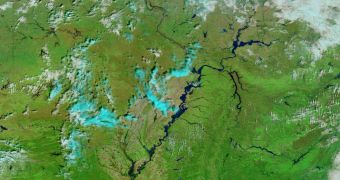The fact that we are heading towards a water crisis is no longer a secret to anyone. Given the rate at which the world's population is growing, we may soon find ourselves searching for the precious chemical all over the place. The World Water Day again brought these issues to the spotlight.
Celebrated every March 22 since 1993, the UN World Day for Water was established as a way of ensuring that water availability and scarcity remain topics of interest, and are not ignored.
The issues we are faced with in this regard are not distant and abstract, but rather quite immediate. More than a billion people don't have guaranteed access to clean drinking water, and most of them are concentrated in the poorest areas of the world.
Some of the world's major cities are also growing at very fast rates, which puts an increased demand on water delivery systems. In some cases, water scarcity is already beginning to make itself known.
The trend is likely to continue, provided that Earth is about to get a few extra billion inhabitants over the next couple of decades. All those people will need to drink water too, it's that simple.
But our freshwater supplies are threatened from several directions – global warming, sea level rise, extensive strain, agriculture and human use. Of those, agriculture remains the most water-intensive.
If the population grows, then we will need even more terrain and water for agriculture, in order to feed everyone. Experts say that that is likely to cause a collapse in freshwater supplies, eventually.
There are the reasons why the United Nations is keen on reminding everyone of the problems we are faced with every year. It is also why NASA is going out of its way to study the world's water cycle.
“Big cities of are one part of a global water cycle that NASA studies. If you step back and look at what NASA does to study the issue of freshwater availability, we’re looking at the origins: What are the Earth’s water supply sources, what are the risks to those sources?” says Bradley Doorn.
The expert, who is based at the NASA Earth Science Division, is the program manager for Agriculture, Carbon, and Water applications in the Applied Science Program.
“You have reservoirs underground, you have snowpack, you have our renewable water supplies from precipitation – and then you have consumptive issues. That’s where big cities fit in,” he adds.
“And there you could bracket off a lot of issues they face, from failing infrastructure, greater demands on use, a lack of conservation practices to good water quality and health issues,” the expert says.
“NASA has a key role, which is in trying to understand the supply and demand issues. That's where it starts. That's what we focus on. You have these big tradeoffs in how we use what water is available,” Doorn concludes.

 14 DAY TRIAL //
14 DAY TRIAL //